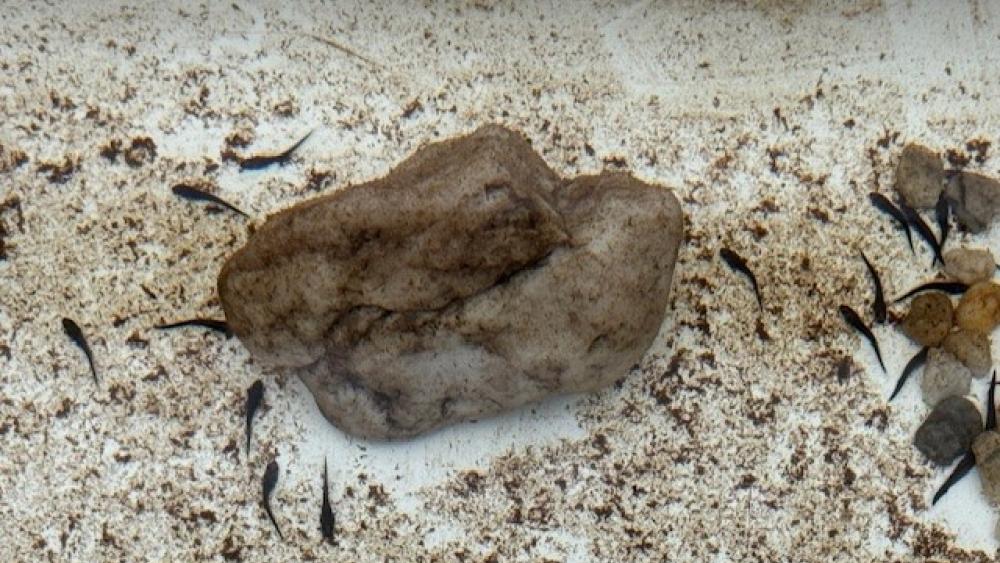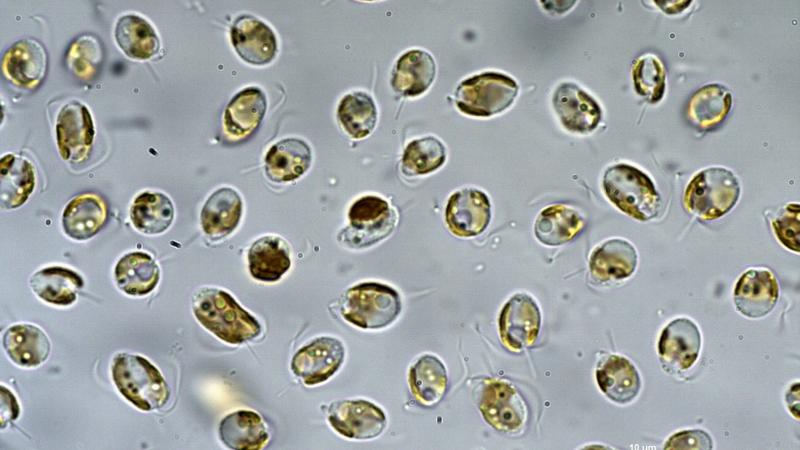
Substrate Experiment
%20Basler%20acA2040-90uc%20(22236536)_20250319_090804815_0050.jpg)
A central objective of the project is the release of juvenile Baltic sturgeon (Acipenser oxyrinchus) to support the sustainable rebuilding of the population in the Oder River system. To this end, young fish are reared in container systems using water from the Oder River immediately after they begin independent feeding. This rearing within their native watershed is intended to promote ecological imprinting and strong site fidelity—key factors for improved survival and overall fitness of stocked individuals.
In addition to standard rearing practices, the HaffStör project includes behavioral biology studies aimed at further enhancing the sturgeons’ adaptability to natural habitats. These include experiments on color preference and substrate selection.
As part of the color experiments conducted at the IGB (Leibniz Institute of Freshwater Ecology and Inland Fisheries), researchers are investigating which bottom colors are preferred by juvenile sturgeon. It is well known that coloration can influence fish behavior, well-being, and potentially growth. In initial trials carried out in April and June 2025, juveniles were allowed to move freely in a tank with four differently colored bottom sections. Interestingly, the fish showed a clear preference for the lighter colors—gray and red—indicating a possible affinity for lighter substrate types.
This finding is being further explored in a long-term rearing experiment. Tanks are equipped with either dark or light substrates, and juvenile fish from the same cohort are reared in parallel over a period of two to three months. Their growth, behavior, and well-being are closely monitored and compared. Should a significant effect of substrate color on development and welfare be confirmed, rearing environments could be tailored more precisely to species-specific preferences—ultimately improving growth, fitness, and adaptability.
In a complementary experiment, the influence of different substrate structures on larval behavior was examined. In natural river systems, even slight current can pose a challenge for newly hatched larvae. To avoid being swept away, larvae appear to seek out protective structures that offer shelter from predators while still allowing access to food.
In July 2025, one-day-old larvae were observed in tanks equipped with various substrates (sand, gravel, and larger stones). In the absence of gravel, the larvae tended to stay within the larger stone structures. However, when gravel was available, they used it significantly more as shelter. The larvae appeared to actively seek close contact with their surroundings, hiding in every available crevice they could find.
Behavioral studies like these are crucial for understanding the specific needs of juvenile sturgeon and optimizing rearing conditions accordingly. The more detailed our knowledge of the species’ habitat requirements becomes, the more precisely husbandry and management strategies can be adapted—with the overarching goal of achieving higher success rates in terms of growth, vitality, and long-term survival.
Short Profile
Duration
BMUKN: Federal Ministry for Environment, Nature Conservation and Nuclear Safety (Germany)
BfN: Federal Agency for Nature Conservation




